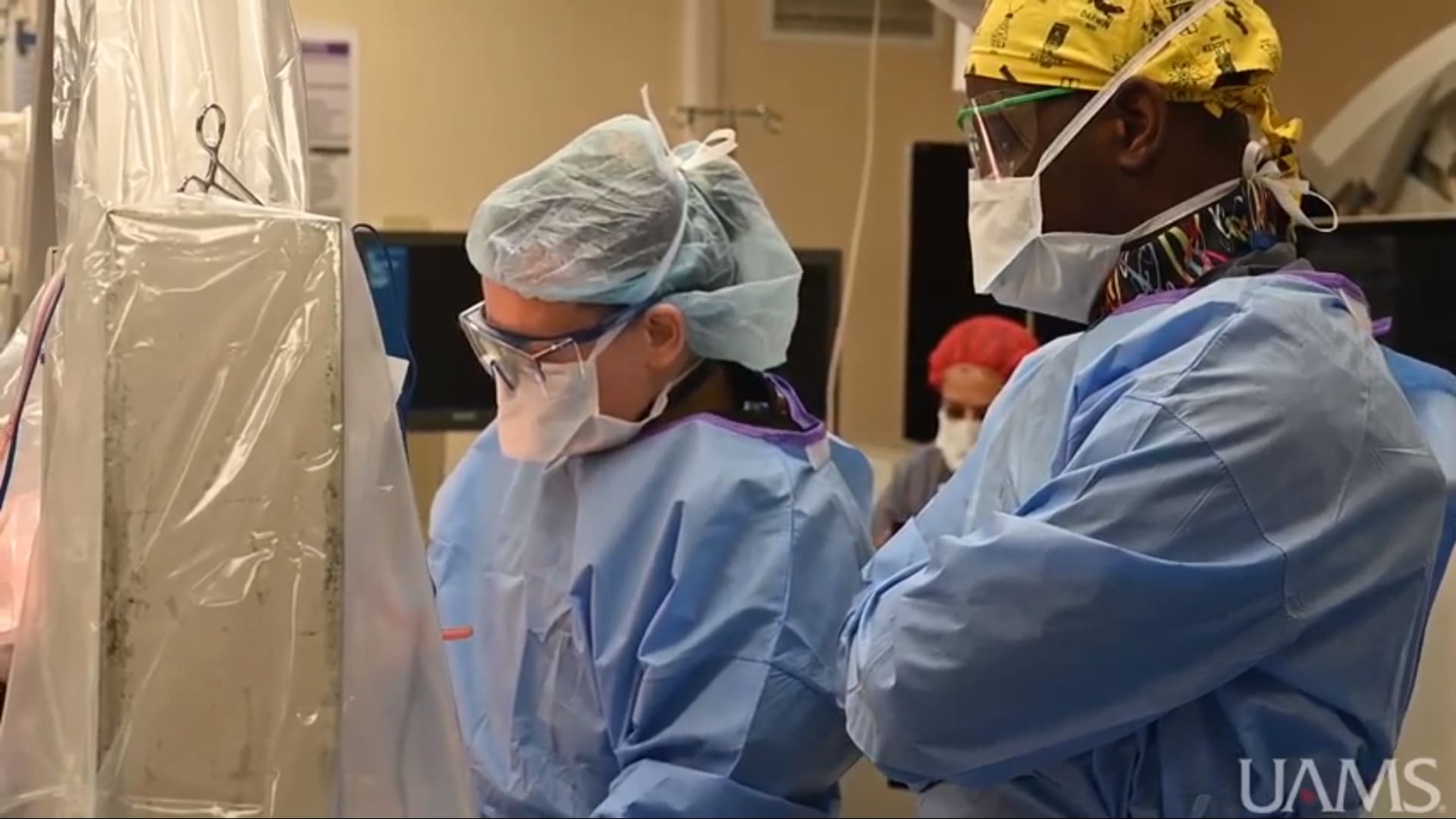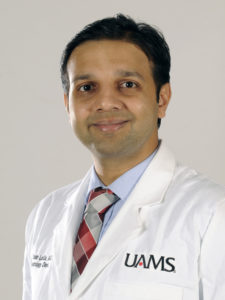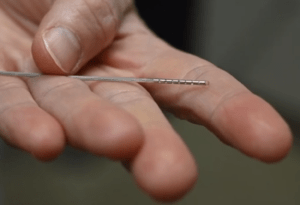View Larger Image

Erika Peterson, M.D., performs deep brain stimulation in the operating room.
Image by Katrina Dupins
UAMS Among First in Nation to Use Newly Approved Deep Brain Stimulation Technology
| LITTLE ROCK — Shortly after the U.S. Food & Drug Administration approved a new version of a device used for deep brain stimulation, doctors at the University of Arkansas for Medical Sciences (UAMS) became one of the first 12 sites in the country and the first in Arkansas to use it.
Deep brain stimulation is a therapy in which a small pacemaker-like device sends electrical signals through very thin wires, known as leads, to a targeted area in the brain to help control symptoms of certain neurological disorders such as essential tremor, primary dystonia, Parkinson’s disease, epilepsy and treatment-resistant obsessive-compulsive disorder.
The SenSight Direction Lead System allows surgeons to more precisely direct the stimulation delivered by the device while, for the first time, simultaneously recording brain changes as they occur, minimizing side effects that require adjustments later by a neurologist. The system allows the adjustments to be made wirelessly, and by recording brain activity, helps doctors understand brain circuitry disorders. This is an important step in learning more about the constant brain changes occurring in these conditions and developing future treatments.
Previously, sensing capability and directional leads weren’t available in the same DBS system, forcing doctors to choose one technology over the other based on the needs of each patient.
“The patient won’t feel anything different than in the previous procedure, but now, the post-operative programming sessions will be much quicker and more effective with fewer side effects, all while revealing a lot of helpful brain changes happening in real time,” said Mitesh Lotia, M.D., an assistant professor of neurology in the UAMS College of Medicine. Lotia said the newly approved version also has an expanded battery life that lasts six years or longer instead of three to five years.
Lotia collaborated with Erika Petersen, M.D., a professor of neurosurgery at UAMS, who on June 7 threaded the long, skinny leads deep into a patient’s brain through dime-sized holes in the skull and positioned them to deliver electrical impulses into the center of the brain, all while the patient remained awake and talking.
Petersen tested the patient’s indecipherable handwriting just before the surgery and then again during the surgery, when her tremors had subsided, instantly allowing her to smoothly and clearly write her name and some numbers. The surgery also improved the patient’s inability to use a fork or a spoon as a result of the tremors.
“Deliberate choices related to materials and design were made to enhance comfort for patients, allow for more precise stimulation and streamline the surgical procedure, all while being able to capture objective data for more efficient, informed programming,” said Medtronic, the Dublin, Ireland-based medical technology company that devised the system.
UAMS is the state’s only health sciences university, with colleges of Medicine, Nursing, Pharmacy, Health Professions and Public Health; a graduate school; a hospital; a main campus in Little Rock; a Northwest Arkansas regional campus in Fayetteville; a statewide network of regional campuses; and eight institutes: the Winthrop P. Rockefeller Cancer Institute, Jackson T. Stephens Spine & Neurosciences Institute, Harvey & Bernice Jones Eye Institute, Psychiatric Research Institute, Donald W. Reynolds Institute on Aging, Translational Research Institute, Institute for Digital Health & Innovation and the Institute for Community Health Innovation. UAMS includes UAMS Health, a statewide health system that encompasses all of UAMS’ clinical enterprise. UAMS is the only adult Level 1 trauma center in the state. UAMS has 3,485 students, 915 medical residents and fellows, and seven dental residents. It is the state’s largest public employer with more than 11,000 employees, including 1,200 physicians who provide care to patients at UAMS, its regional campuses, Arkansas Children’s, the VA Medical Center and Baptist Health. Visit www.uams.edu or uamshealth.com. Find us on Facebook, X (formerly Twitter), YouTube or Instagram.###

